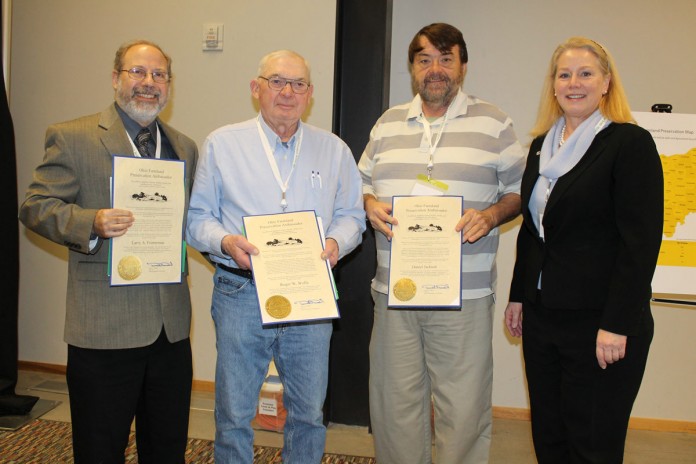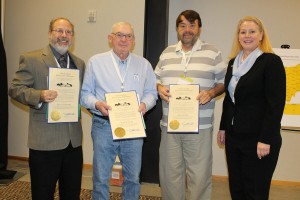See also, ODA awards ambassador awards.
COLUMBUS — The state’s farmland preservation program is undergoing a major structural change that will see more emphasis on localization.
The 13-year-old program has traditionally been centralized and administered through the Ohio Department of Agriculture. The ODA will retain control of the program, but during the annual summit Jan. 17, officials unveiled a new plan that will greatly increase responsibility at the local level.
Denise Franz King, the state’s farmland preservation office director, said “Certified Local Sponsors” will be approved by ODA and be responsible for handling landowners’ applications for preservation, as well as awarding funds.
Funds available
The Office of Farmland Preservation has $3 million to work with for 2013, from the voter-approved Clean Ohio Fund. King said about $2.7 million of that will be used on preservation, with the rest used for administrative expenses.
Applications to become certified sponsors were distributed at the meeting, and basically require the applicant to document his or her experience with land easements, real estate, and history with the state’s farmland preservation program. They are due back to ODA by March 1.
It’s unclear how many local sponsors there will be, but King said she hopes 15-20 will be funded.
Distributing money
After the entities are certified, they would be allocated funds from the $2.7 million. It’s important all parts of the state have a chance at the money, she said, but how the money will be distributed is yet to be determined.
“To a reasonable degree we have to make sure that the whole state benefits. I’m not advocating that we take the funds available and divide it up by 88,” she said. “That would be meaningless to everybody.”
After certification, sponsors would receive training from ODA about how the program will work, and they will be bound by the terms of the “Memorandum of Agreement,” a document presented at the summit outlining the legal requirements and expectations of administering the program.
New rules
Michael Rodgers, ODA’s chief legal counsel, said the preservation program has run smoothly so far, but with the changes, it’s important to make sure all parties have “clarity” about their duties, and that “any and all taxpayer funds are being spent appropriately.”
Wayne County Commissioner Ann Obrecht voiced concern that localizing the selection process could put local officials in a difficult position, because they would have to select farms to be funded, from applicants who the officials know personally.
King said one tool that will help alleviate that issue is the state-based online application, which provides uniformity and scores each applicant with the same criteria. Sponsors have the choice of drafting their own applications, but using the state-based program offers some guidance.
She said the change in programming is a result of the 40 percent reduction in size of the Office of Farmland Preservation, increased duties to look after and monitor ag easements, as well as an ongoing discussion to provide new opportunities for local involvement of the program.
“The decision has been made to go with a localized program,” King said. “I think we all need to give it our best shot and try it, for probably two years, and then reevaluate it and see how it worked. I don’t know that we’re saying that we’re going to do this absolutely forever, but a lot of thought and preparation and the involvement and the ideas of a lot of people have been gone into this.”
Applications to become a Certified Local Sponsor are expected to be online around Feb. 1.
Local sponsor process and duties:
- Application to become a Certified Local Sponsor, due March 1.
- Ohio Department of Agriculture will allocate available funds ($2.7 million total) among sponsors.
- Certified sponsors will sign and adhere to the ODA’s cooperative agreement.
- ODA will hold training for Certified Local Sponsors.
- The certified sponsors will then market the state ag easement purchase program in their communities. The sponsors will conduct a landowner application process, ranging from 30-90 days.
- The sponsors will forward the selected projects to ODA for confirmation and the sponsors and ODA will announce which easements are to be purchased.
- ODA will send a “notice of selection” and the acquisition will begin. Legal requirements will be met, including examination of the title, and preparation of the deed for the easement.
- The sponsors will apply for any applicable federal Farm and Ranch Lands Protection funds. And lastly, ODA checks will be released by the controlling board and delivered at closing.











